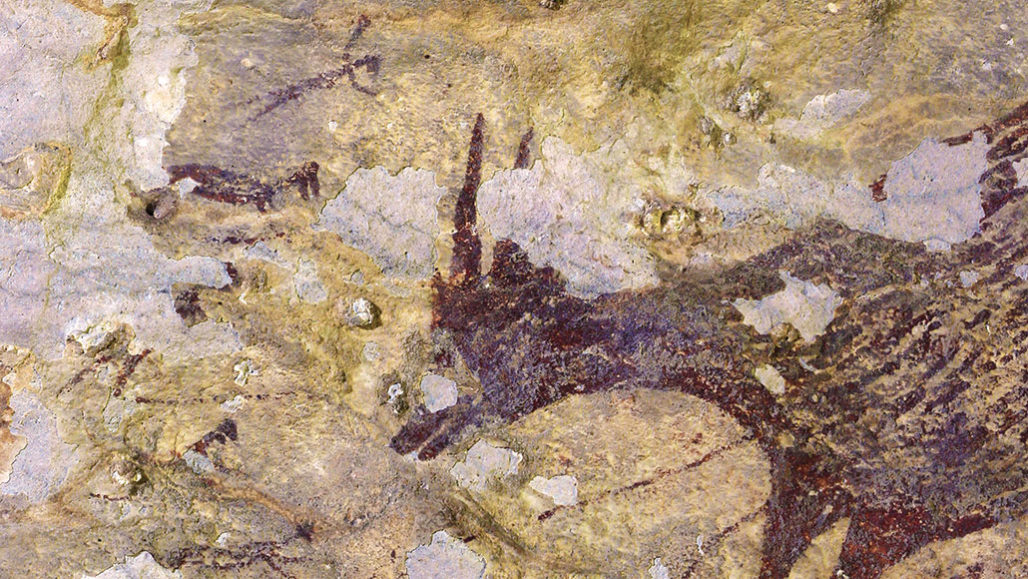This 2017 video is called Antiphaty – Anti Punk Fuck Off (Official Video).
Antiphaty are a band from Malang, Indonesia.
15 December 2020 was the day of the Indonesia part of the Punk Scholars Conference on the internet; after earlier days about France and about Britain and other European countries.
It started for me with online concerts by the bands SOFT-X and S.W.E.W..
219 people were participating in the internet session then, not only from Indonesia, also from Australia, Hong Kong, Malaysia, the Philippines, Britain, the Netherlands, the USA, Brazil and other countries.
Then, there were two parallel sessions.
In mine, Ms Ekawati Marhaenny Dukut spoke about Punklung music. That is music played by punks on anklung instruments; traditional West Javenese instruments which are simple, so more affordable than an electric guitar with amp.
An audience member said there should be more innovation in Indonesian punk.
Then, Ms Ni Putu Sridiniari from Ubud in Bali spoke about Spirituality and colonial imaginaries in present-day Ubud: Postcolonial critique from the eyes of a local. In Ubud, there was the rise of a New Age style ‘spirituality’ and wellness industry. With ideas from Indian Hinduism (or western misconceptions of Indian Hinduism), neglecting that Balinese Hinduism has developed in its own way. It was an interesting lecture shedding light on Indonesian society today.
It did not fit directly into the punk theme of the conference. Traditional gamelan music of Bali is faster than in Java island. Might that influence Balinese punk musicians to also play faster than their Javanese colleagues? Ms Ni Putu Sridiniari replied that, not being a music expert, she did not know.
Then, Aliffaiz Achmad Iman Naufal Octavideta about Jakarta graffiti writers in sticker slap culture.
After that, the bands Cryptical Death and Faith Runner played. Though the sound quality was not optimal, the bands sounded fresh, somewhat reminiscent of Stiff Little Fingers.
This music video is called CRYPTICAL DEATH – Injustice Society.
Then, Barakalla Robyn spoke about punk music and the climate crisis. He plays in the band Somagora. They play songs about global warming. So does at least one punk band in Bali.
Then, about Indonesian Dutch contributions to the 1977-1981 first European punk wave.
Then, Manunggal K. Wardaya spoke about how the post-1965 mass murders by the Suharto dictatorship of about a million communists and so-called communists were reflected in the lyrics of Indonesian heavy metal bands. The grandmother of one heavy metal band member had been jailed without trial for 13 years, for being, not in the communist party. But in an artists’ organisation which included leftist members. A relative of another heavy metal musician had been in prison without trial for over nine years; he was not in the communist party, but in the PNI party of Indonesia’s first president Sukarno.
Bands played: The Next Victim; and Humanimal, a bit Beastie Boys like.
Then, keynote presentations in breakout room A: Hikmawan Saefullah and Elise Imray Papineau. Behind Ms Papineau was a sign saying Capitalism is the virus.
Hikmawan Saefullah remembered how he in 1994 played in his first punk band. A time when bands like the Clash and Crass were influences in Indonesia. They played covers of Green Day and Bad Religion. The first concert was at an Islamic school. Many punks in Indonesia are also Muslims. Many, not all, are homeless.
Punks played an important role in the overthrow of dictator Suharto. However, after the fall of Suharto, some problems of the old regime like corruption and arrests of punks continued. Some pro-democracy activists became disillusioned. Some of these converted to fundamentalist Islam and stopped playing music. At least one of those who had become fundamentalist later returned to punk music and now considers himself an anarcho-Muslim. Some, including a punk drummer woman, became atheist. The situation for atheists in Indonesia is difficult.
Recently, awareness of bad conditions for workers, climate change and the coronavirus crisis led to an upturn in interest in punk, anarchism and other progressive tendencies.
Then, a question about the relationship between punk and psychobilly in Indonesia. Psychobilly is not big in Indonesia now. A few years ago there was the band Gorilla Trampoline with a female singer in Bandung. This year, another Indonesian psychobilly band was supposed to play in the Netherlands. But the COVID-19 crisis intervened.
The conflicts between fans of different music genres in Indonesia are now much less than in the 1990s. Then, heavy metal fans used to throw bottles when punk bands played. Not anymore.
Finally, the band Somagora played an acoustic set, including songs like Sick society and searise. Their guitarist had a Beastie Boys T-shirt on.
